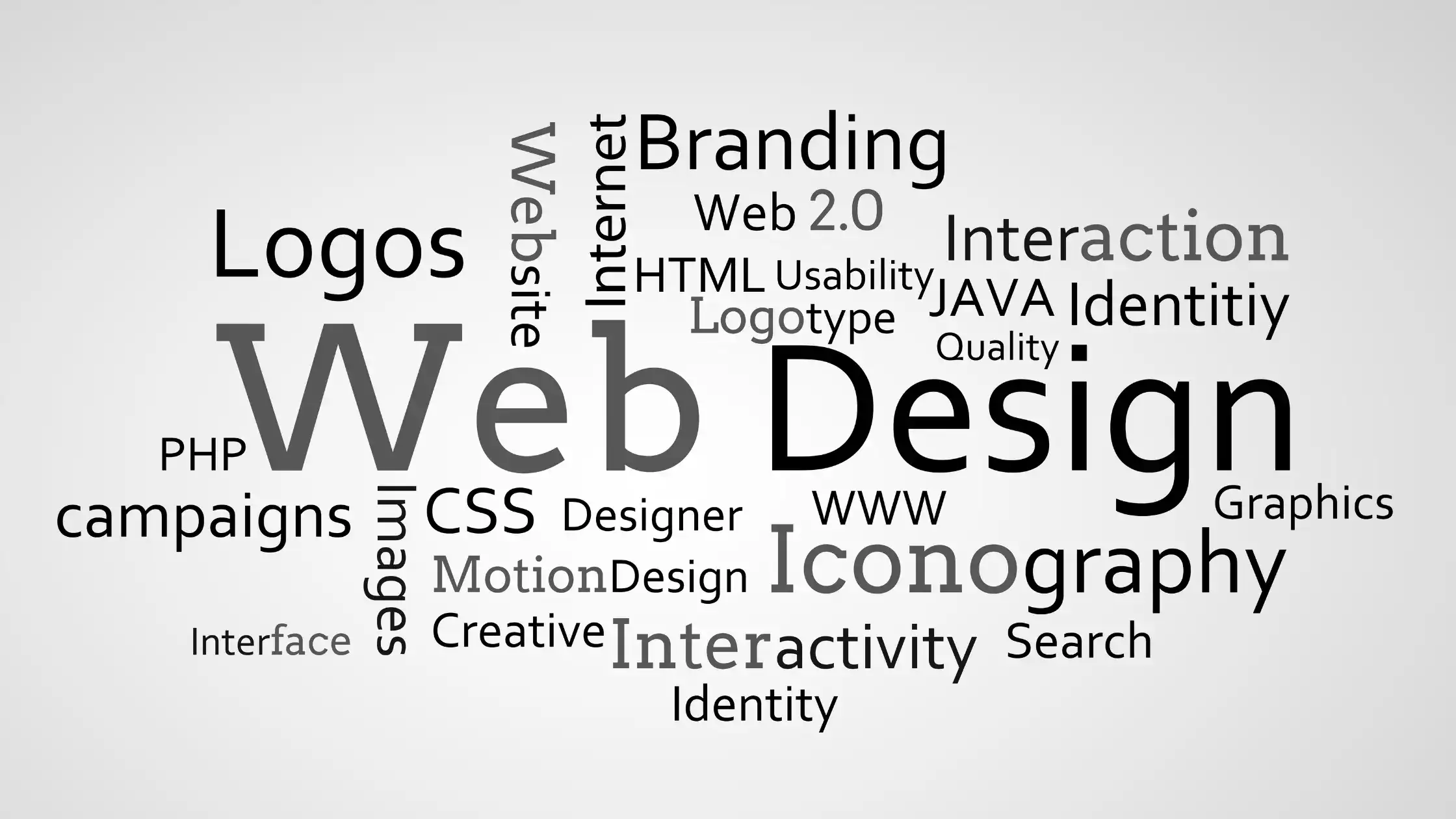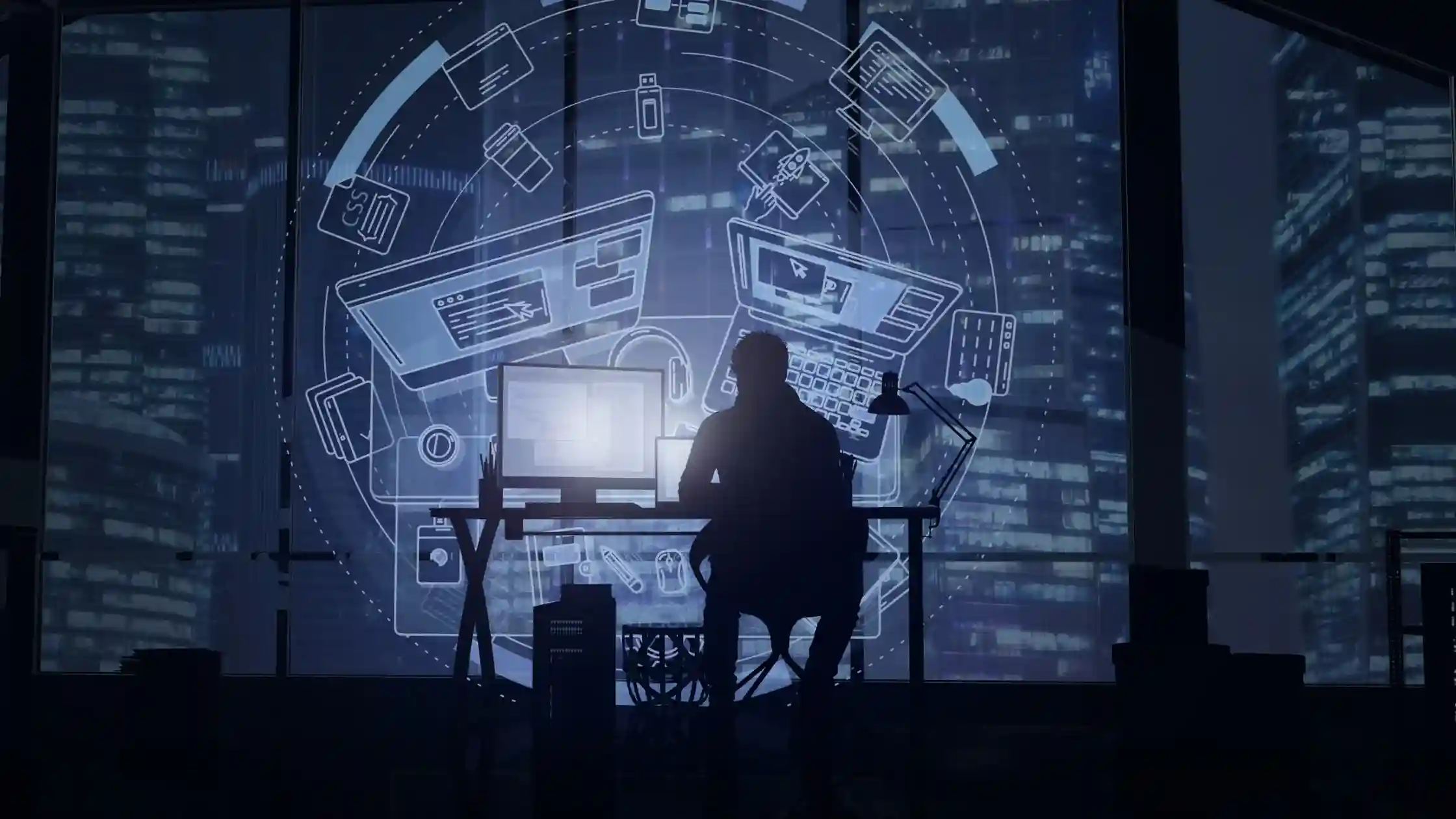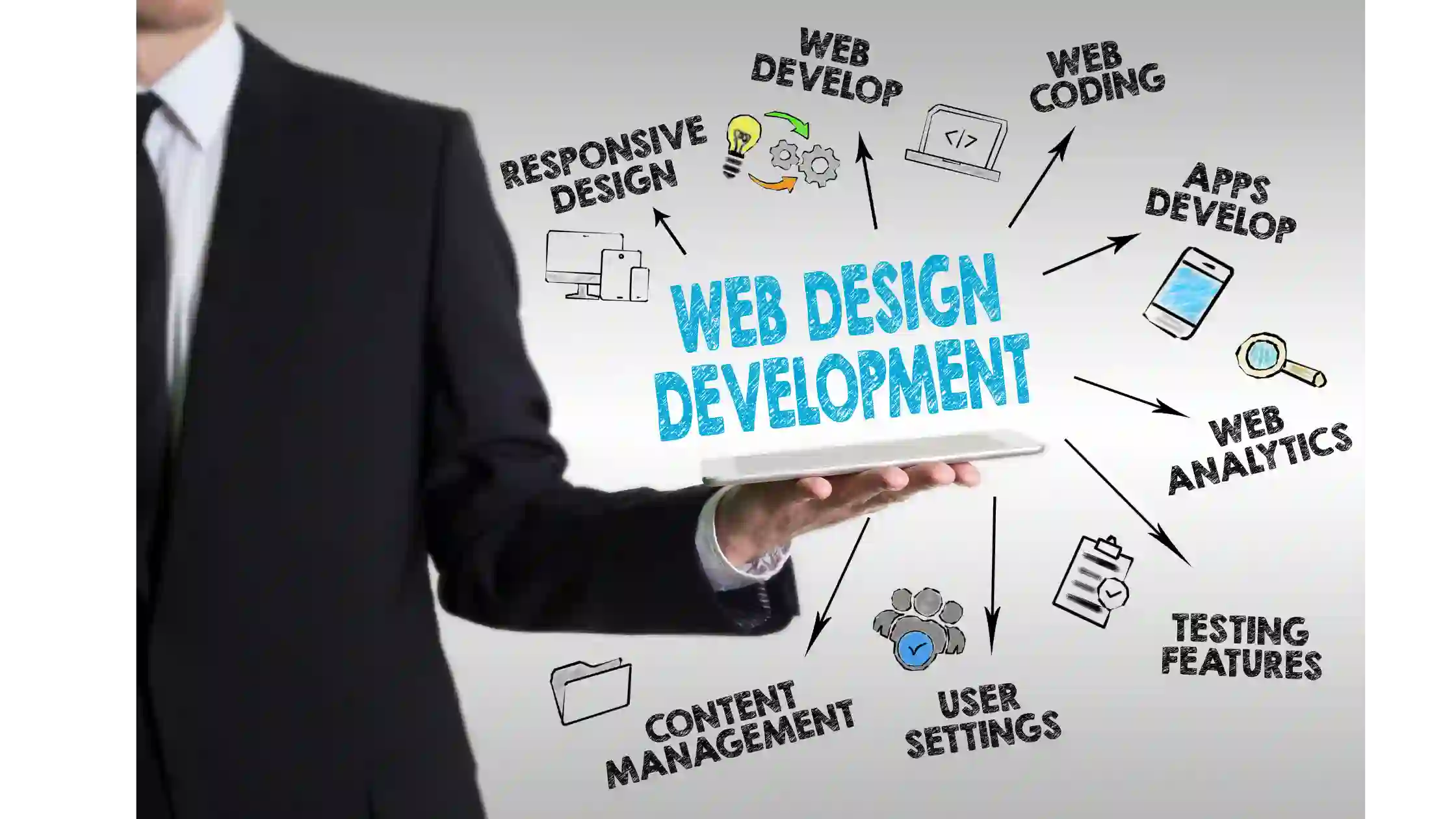In today’s digital age, web design and development have become crucial for creating engaging online experiences for an ever-growing number of Internet users13. As a field encompassing website creation, maintenance, and security, it paves the way for businesses and individuals to connect with audiences worldwide.

This guide will cover the basics of web design, delve into the complexities of web development, and explore the synergy between these two disciplines. Additionally, we will look into current trends and the future of web design and development, ensuring you have the knowledge needed to navigate this dynamic field. However, you must first understand web design and explore web development.
I’ll help you answer all these questions in this post. Let’s learn everything about Web Design and Development.
Disclaimer: Heads up, we make money if you purchase through our affiliate links.
Table of Contents
Understanding Web Design
Understanding the core elements of web design is crucial for creating a website that looks good and functions well for users. Here are some key components:
- Navigation and Responsiveness: Ensuring your website is easy to navigate and responsive across all devices is fundamental. This includes having a solid navigation system, responsive design, and quick page speed to enhance user experience.
- Visual and Content Harmony: The synergy between purposeful visuals, good copy, and call-to-action (CTA) buttons significantly affects user engagement and conversions. Incorporating a style guide helps maintain consistency in colors, fonts, and layout across the website, reflecting the brand’s identity.

- Technical Aspects and Accessibility: Web design is not just about aesthetics; it involves strategic planning, creativity, and understanding the technicalities such as HTML and CSS coding languages. Making your website accessible to all users, including those with disabilities, is essential. Testing the site with real users ensures everything works as intended.
When combined thoughtfully, these elements contribute to a well-designed website that can positively influence user behavior and increase engagement and conversions.
Exploring Web Development
Exploring the realm of web development unveils a complex yet fascinating process that transforms a static design into a dynamic, interactive experience. Web developers are at the heart of this transformation, and they meticulously craft the site’s infrastructure to ensure it’s functional and engaging for users. Their expertise spans across various domains:
- Front-End Development: Involves creating the visual elements that users interact with. This includes working with HTML, CSS, JavaScript, and frameworks like React, Angular, and Vue.js to ensure the website is responsive and user-friendly.
- Back-End Development: Focuses on server-side scripting, database management, and application logic. Technologies such as Java, Python, PHP, Ruby, and ASP.NET handle data transfer, content management systems, and form submissions, ensuring the website operates smoothly behind the scenes.

- Testing and Deployment: A critical yet often underrated phase where various testing methods are employed to ascertain the website’s performance and functionality. Following successful testing, the deployment phase transitions the website from a development stage to being live and accessible to users worldwide.
Web development is a collaborative effort, requiring a close partnership between developers, designers, and clients to align on the vision and functionality of the website. Through stages of analysis, design, development, and maintenance, developers prioritize user needs, focusing on creating accessible, high-quality, and maintainable websites that stand the test of time.
The Synergy Between Web Design and Development
The synergy between these distinct yet interconnected fields is paramount for creating a successful web design and development website. Here’s how collaboration and understanding foster this synergy:
- Collaboration Essentials
- Communication: Designers and developers must communicate effectively to avoid increased development cycles and costs.
- Shared Principles: Establishing a clear set of constraints and principles ensures both parties work towards the same goal.
- Workflow & Processes: A well-defined workflow facilitates smooth collaboration, with project managers playing a crucial role in liaison.

- Benefits of Synergy
- Combining skills leads to seamless collaboration, enhanced user experience, and efficiency.
- Continuous learning and specialization in both fields expand job opportunities and foster holistic problem-solving.
- Practical Steps for Improved Teamwork
- Set clear roles and responsibilities and foster open communication.
- Use collaboration tools and celebrate successes to build a positive team dynamic.
This synergy meets clients’ visual and functional expectations and incorporates sound SEO strategies, making the website more effective in reaching its target audience.
Trends and Future Outlook in Web Design and Development
As we delve into the trends and future outlook in web design and development, it’s evident that innovation and user experience are at the forefront. Here are some pivotal trends shaping the future:
- Y2K and Customization:
- Y2K Design Elements: Inspired by early 2000s fashion, music, and art, web design is seeing a resurgence of retro typefaces, pixelated fonts, and custom cursors to stand out.
- Custom Fonts: Designers create unique typefaces and hand-drawn lettering for websites, moving beyond standard text to make web designs more distinctive.
- Technological Advancements:
- 3D Illustrations and Claymorphism: Websites adopt 3D illustrations for a complete visual experience and Claymorphism for tactile, dynamic interfaces.
- Interactive Elements: “Just for fun” interactions, like animations and character integrations, enhance user engagement without serving a specific function.

- Optimization and Collaboration:
- Website Performance: Emphasis on light, quick websites optimized for user experience with WebP images and lazy load videos.
- Collaborative Tools: Digital tools supporting remote collaboration, such as Trello and Webflow, are essential for seamless web design and development.
These trends highlight the ongoing evolution of web design and development, focusing on personalization, technological innovation, and enhanced collaboration to meet and exceed user expectations.
Conclusion
Throughout this guide, we have explored the fundamental aspects and intricate details of web design and development, revealing the crucial role each plays in crafting engaging and efficient online experiences. By examining everything from basic design principles to the advanced technical frameworks of development, alongside the importance of a synergistic approach between designers and developers, we’ve provided a comprehensive overview for navigating the ever-evolving digital landscape. This exploration underscores the significance of continuous learning, innovation, and collaboration in producing websites that meet and exceed user expectations.
As the field continues to evolve with new trends and technologies, the insights shared here set the stage for readers to delve deeper into creating more dynamic, user-friendly, and impactful online presences. The emergence of trends like Y2K design elements, technological advancements in 3D illustrations, and the emphasis on website optimization highlight the importance of staying ahead in a constantly changing environment. The drive for further research, ongoing education, and proactive application of these principles will empower developers and designers alike to break new ground in web design and development, ensuring a prosperous future with innovative, accessible, and engaging websites.
FAQs
What does web design entail, as outlined in the Ultimate Guide to Website Design? Web design is the digital craft of creating a website’s visual and functional aspects, including its color scheme, typography, imagery, and user interface. This process is crucial for establishing an online presence and involves following best practices in website design.
Can you outline the seven main steps involved in the web design process? The web design process can be broken down into seven key steps:
- Identify your goal for the website.
- Define the scope of your project.
- Design the layout and appearance of your website.
- Create the content that will populate your site.
- Visualize how the content will be displayed.
- Develop the website by translating your design into a functional site.
- Launch your website to make it accessible to the public.
What is considered the most essential rule in web design and development? The most critical rule in web design and development is maintaining consistency. This means using a cohesive color palette, typography, and layout styles across the website and ensuring that images follow a consistent theme. Formatting should be uniform for content-heavy blogs to enhance readability and user experience.
How can someone learn web design on their own? To teach yourself web design, follow these steps:
- Grasp the fundamental visual design principles, such as understanding lines, shapes, and color theory.
- Learn the basics of HTML, the building block language of the web.
- Get to know CSS, which styles the HTML elements.
- Study the foundations of UX (User Experience) design to enhance how users interact with your website.
- Familiarize yourself with UI (User Interface) design to create intuitive and navigable layouts.
- Learn about the principles of creating effective layouts.
- Explore typography and how it affects readability and aesthetics.
- Apply your knowledge by building something practical to consolidate your learning.